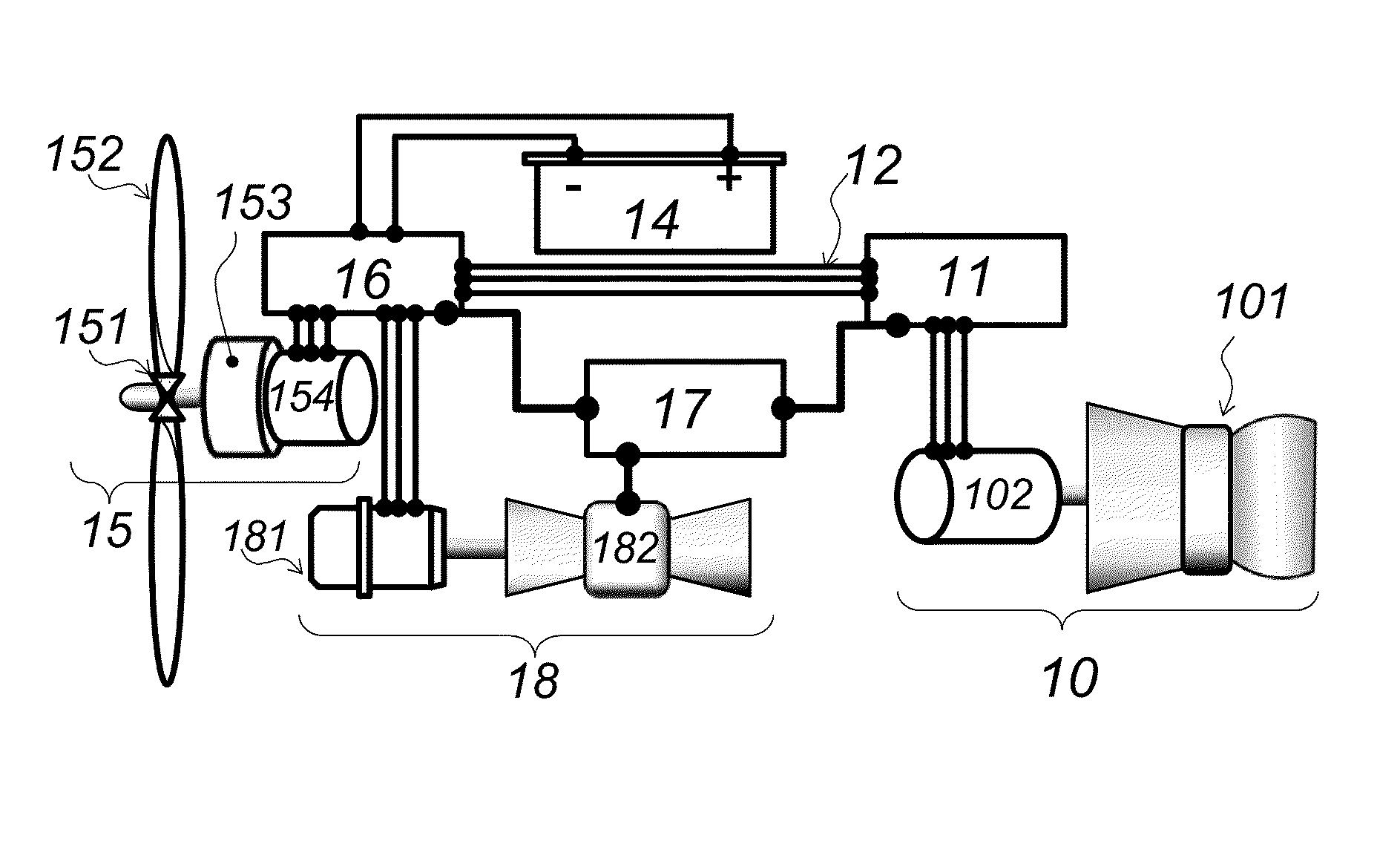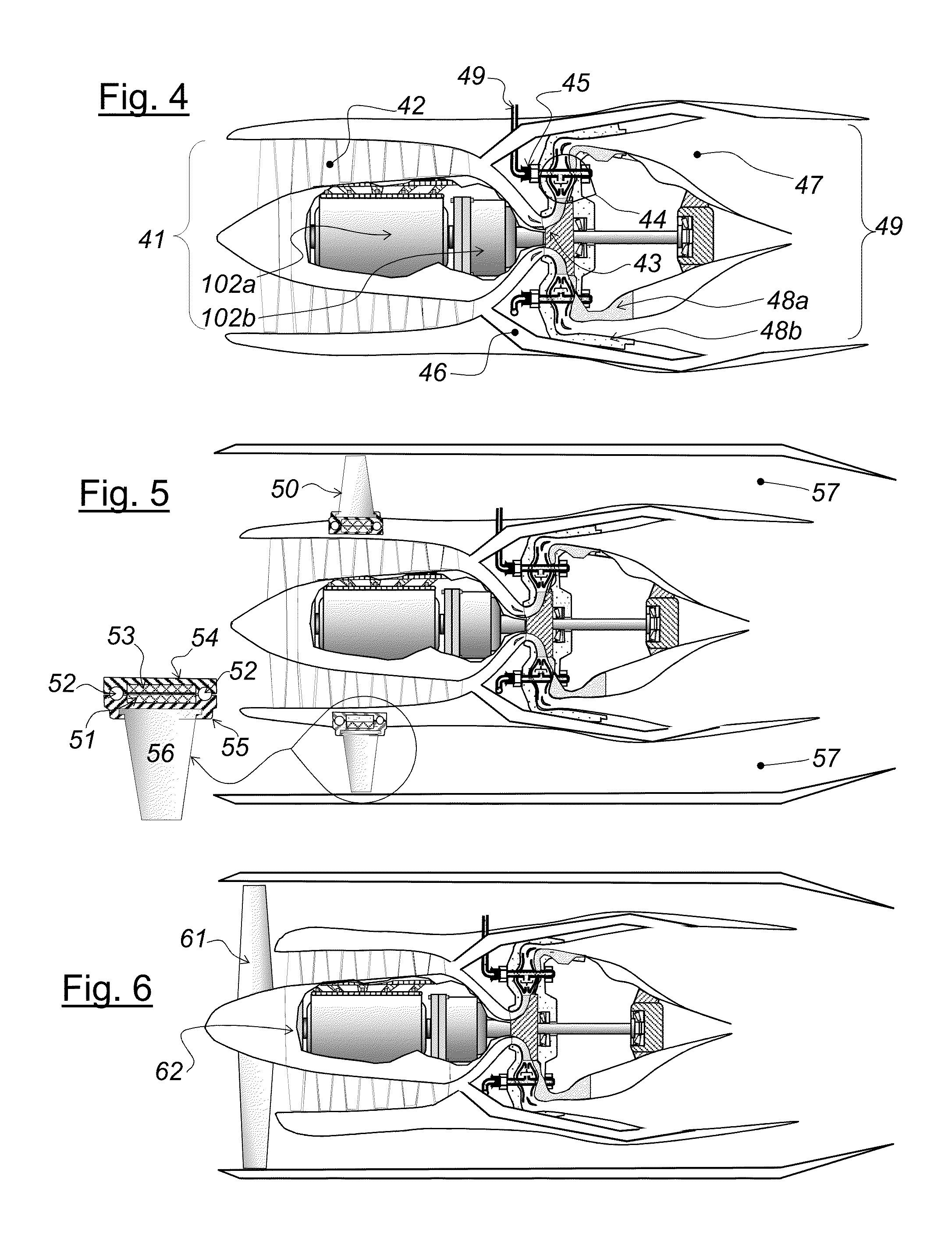Hybrid Gas Turbine Propulsion System
a gas turbine and hybrid technology, applied in the field of hybrid gas turbine propulsion systems, can solve the problems of inordinately high fuel consumption, inability to fully exploit the thermodynamic energy potential of typical aviation fuels, and failure of high-stressed power turbine rotating machinery, so as to avoid thermal stress, reduce fuel consumption, and increase responsiveness to sudden throttle inputs
- Summary
- Abstract
- Description
- Claims
- Application Information
AI Technical Summary
Benefits of technology
Problems solved by technology
Method used
Image
Examples
Embodiment Construction
[0017]In FIG. 1, the hybrid aerodynamic thrust system is schematically depicted, wherein, an aircraft at rest uses electrical energy from the SE module 14, to power aircraft electrical systems, as well as supply the APU module 18 with start-up current. Three-phase AC main bus current is expected in the preferred embodiment. A minimum electric current operating frequency should be the aviation standard 400 Hz for high-tension devices, or higher, to achieve practical size and weight specifications for the electric motors, motor / generators and stand-alone generators used within this invention. However, electrical system specifications regarding specific voltages, loadings or specific electric motor, generator or motor / generator unit designs are not the subject of this disclosure since existing art covers said design and construction adequately.
[0018]In a typical aircraft flight mission, after the APU 18 has been started, it can then drive the TT module turbocompressor(s) 102a, 102b and...
PUM
 Login to View More
Login to View More Abstract
Description
Claims
Application Information
 Login to View More
Login to View More - R&D
- Intellectual Property
- Life Sciences
- Materials
- Tech Scout
- Unparalleled Data Quality
- Higher Quality Content
- 60% Fewer Hallucinations
Browse by: Latest US Patents, China's latest patents, Technical Efficacy Thesaurus, Application Domain, Technology Topic, Popular Technical Reports.
© 2025 PatSnap. All rights reserved.Legal|Privacy policy|Modern Slavery Act Transparency Statement|Sitemap|About US| Contact US: help@patsnap.com



